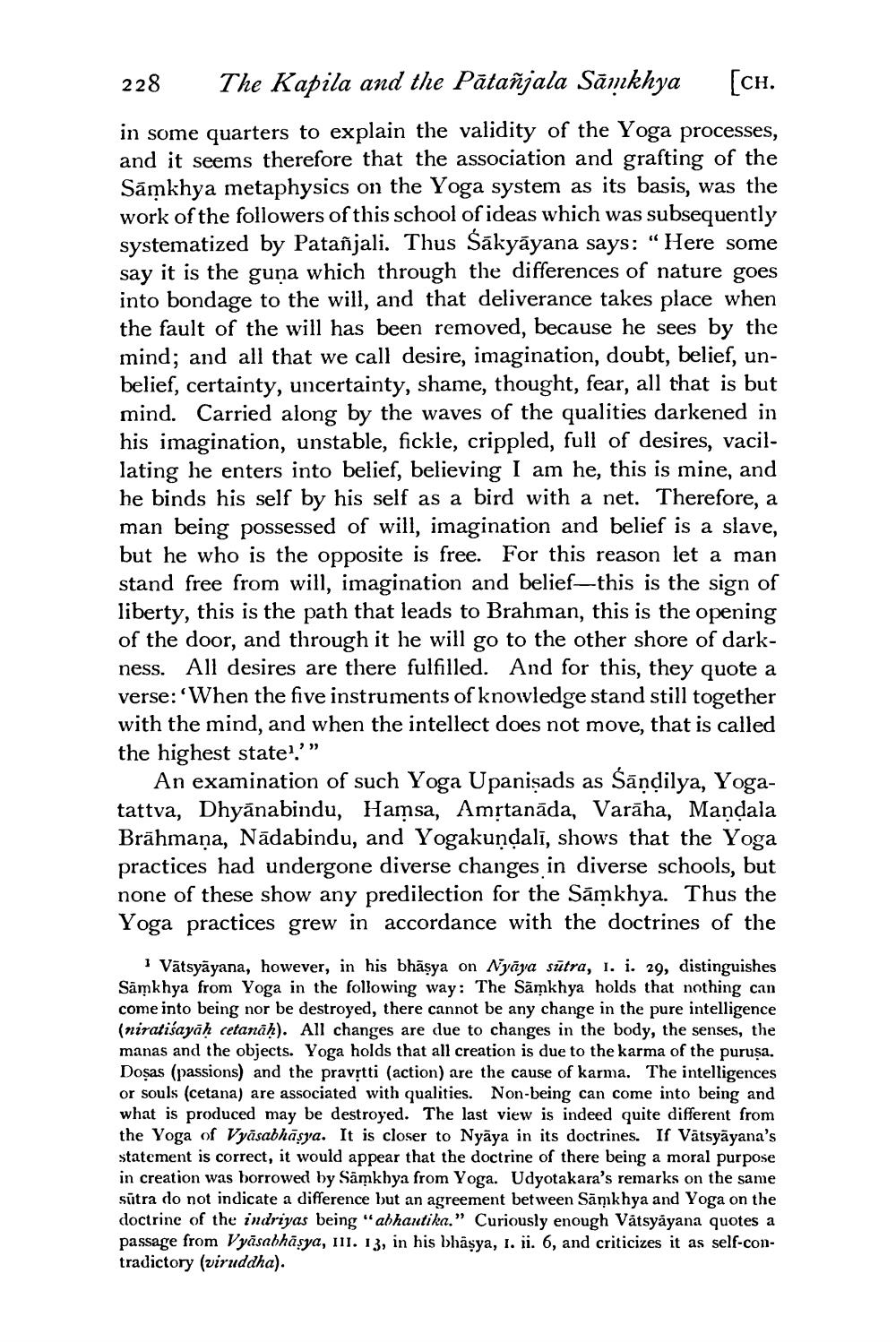________________
228 The Kapila and the Pātañjala Sāņkhya [CH. in some quarters to explain the validity of the Yoga processes, and it seems therefore that the association and grafting of the Samkhya metaphysics on the Yoga system as its basis, was the work of the followers of this school of ideas which was subsequently systematized by Patañjali. Thus Śākyāyana says: "Here some say it is the guna which through the differences of nature goes into bondage to the will, and that deliverance takes place when the fault of the will has been removed, because he sees by the mind; and all that we call desire, imagination, doubt, belief, unbelief, certainty, uncertainty, shame, thought, fear, all that is but mind. Carried along by the waves of the qualities darkened in his imagination, unstable, fickle, crippled, full of desires, vacillating he enters into belief, believing I am he, this is mine, and he binds his self by his self as a bird with a net. Therefore, a man being possessed of will, imagination and belief is a slave, but he who is the opposite is free. For this reason let a man stand free from will, imagination and belief-this is the sign of liberty, this is the path that leads to Brahman, this is the opening of the door, and through it he will go to the other shore of darkness. All desires are there fulfilled. And for this, they quote a verse: 'When the five instruments of knowledge stand still together with the mind, and when the intellect does not move, that is called the highest state!”
An examination of such Yoga Upanişads as sāndilya, Yogatattva, Dhyānabindu, Hamsa, Amrtanāda, Varāha, Mandala Brāhmana, Nādabindu, and Yogakundali, shows that the Yoga practices had undergone diverse changes in diverse schools, but none of these show any predilection for the Sámkhya. Thus the Yoga practices grew in accordance with the doctrines of the
Vātsyāyana, however, in his bhāsya on Nyāya sūtra, 1. i. 29, distinguishes Samkhya from Yoga in the following way: The Sāmkhya holds that nothing can come into being nor be destroyed, there cannot be any change in the pure intelligence (niratiśayāḥ cetanāḥ). All changes are due to changes in the body, the senses, the manas and the objects. Yoga holds that all creation is due to the karma of the purusa. Dosas (passions) and the pravịtti (action) are the cause of karma. The intelligences or souls (cetana) are associated with qualities. Non-being can come into being and what is produced may be destroyed. The last view is indeed quite different from the Yoga of Vyāsabhāsya. It is closer to Nyāya in its doctrines. If Vatsyāyana's statement is correct, it would appear that the doctrine of there being a moral purpose in creation was borrowed by Samkhya from Yoga. Udyotakara's remarks on the same sūtra do not indicate a difference but an agreement between Sāņkhya and Yoga on the doctrine of the indriyas being "abhautika." Curiously enough Vätsyāyana quotes a passage from Vyāsabhāsya, n. 13, in his bhâsya, 1. ii. 6, and criticizes it as self-contradictory (viruddha).




